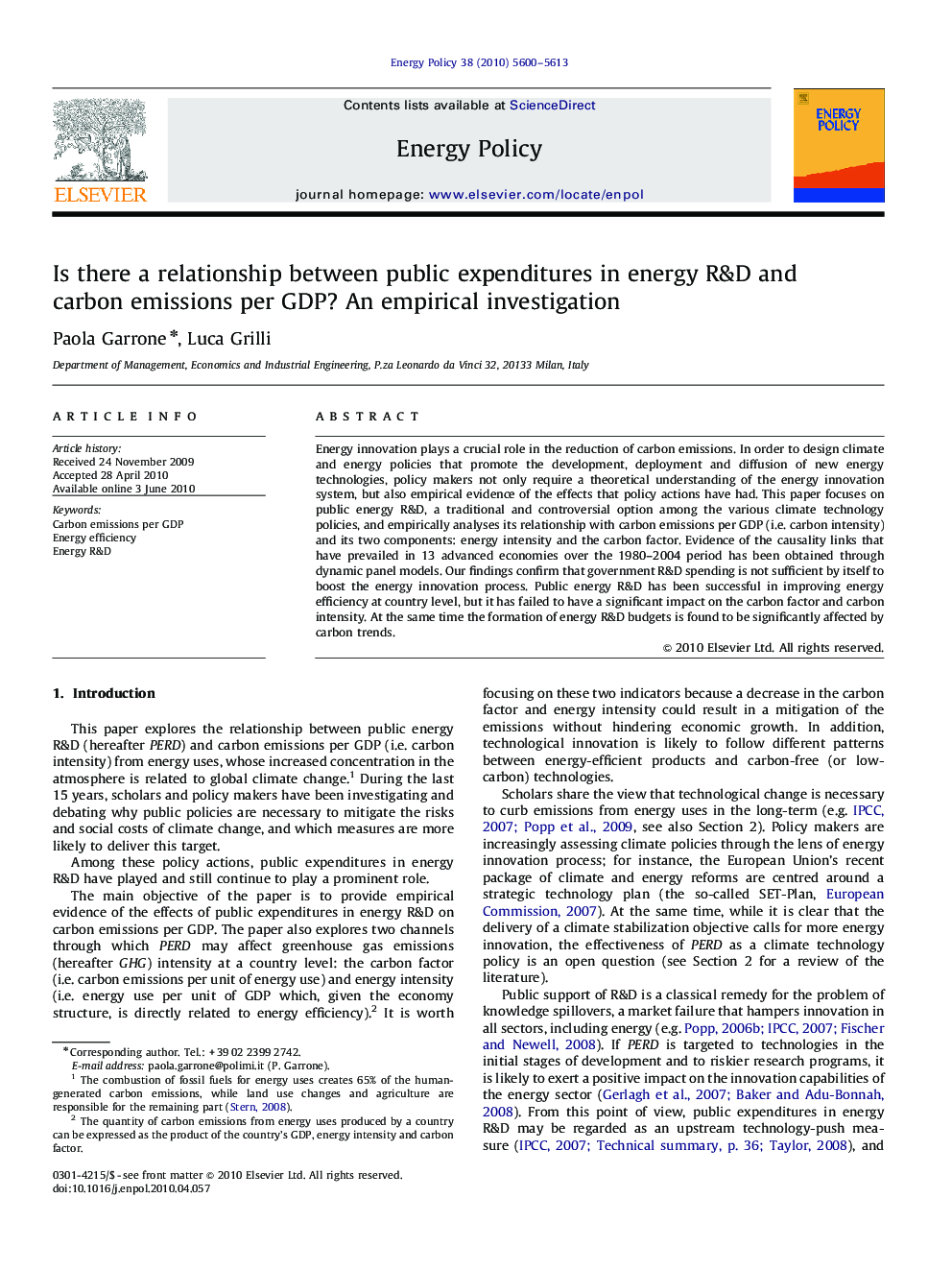| Article ID | Journal | Published Year | Pages | File Type |
|---|---|---|---|---|
| 996005 | Energy Policy | 2010 | 14 Pages |
Energy innovation plays a crucial role in the reduction of carbon emissions. In order to design climate and energy policies that promote the development, deployment and diffusion of new energy technologies, policy makers not only require a theoretical understanding of the energy innovation system, but also empirical evidence of the effects that policy actions have had. This paper focuses on public energy R&D, a traditional and controversial option among the various climate technology policies, and empirically analyses its relationship with carbon emissions per GDP (i.e. carbon intensity) and its two components: energy intensity and the carbon factor. Evidence of the causality links that have prevailed in 13 advanced economies over the 1980–2004 period has been obtained through dynamic panel models. Our findings confirm that government R&D spending is not sufficient by itself to boost the energy innovation process. Public energy R&D has been successful in improving energy efficiency at country level, but it has failed to have a significant impact on the carbon factor and carbon intensity. At the same time the formation of energy R&D budgets is found to be significantly affected by carbon trends.
